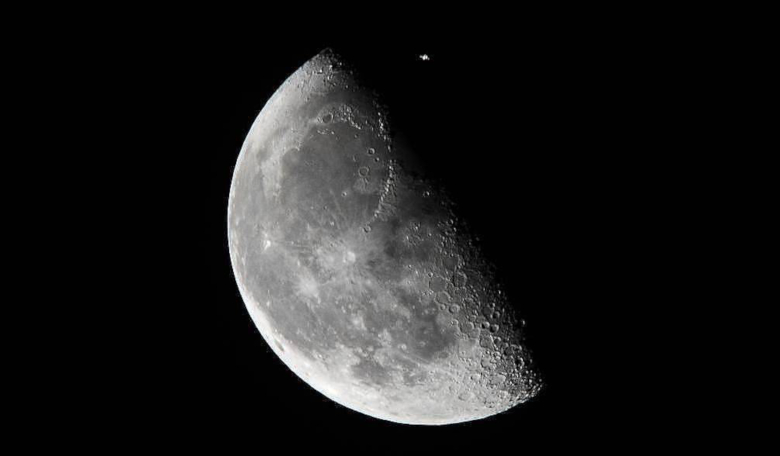Following a meeting of agency top officials in St. Petersburg this week, Russia and China have agreed on a joint exploration of the Moon, which could see each country contributing a payload to the others up and coming lunar missions, namely the Luna-26 orbiter spacecraft and Chang’e-7 polar landing mission respectively.
The agreement would also see both space-faring nations establishing a joint data centre for lunar and deep space exploration; something which has previously been discussed but was also reaffirmed this week. Dmitry Rogozin, Director General of Roscosmos, and Zhang Keqiang, head of the China National Space Administration were on hand to sign the cooperation documents in Russia on Tuesday.
Russia’s Luna-26 orbiter spacecraft is a planned lunar polar orbiter that would also function as a telecomm relay between Earth and Russian land assets. It has been in planning since at least 2011 and its launch date is now targeted for 2024.
Meanwhile Chang’e-7 polar landing mission aims to make detailed surveys of the south polar region of the Moon, covering the terrain, geological composition, locations of water ice, and space environment. The mission may involve a rover and is expected to launch in 2023. The nation is already enjoying success with its Chang’e-4 luna robotic spacecraft mission, which touched down successfully on the far side of the Moon early in January this year.
The cooperation agreement comes amidst a changeable week for the globe’s other big space player, NASA. The space agency reported this week that it has finished assembling the main structural components for the Space Launch System (SLS) rocket core stage - the largest rocket stage the agency has built since the Saturn V that sent Apollo astronauts to the Moon.
“NASA has achieved a historic first milestone by completing the final join of the core stage structure for NASA’s Space Launch System, the world’s most powerful rocket,” said Julie Bassler, the NASA SLS stages manager. “Now, to complete the stage, NASA will add the four RS-25 engines and complete the final integrated avionics and propulsion functional tests.
However, the elation of bolting the engine section to the stage’s liquid hydrogen propellant tank was quickly followed by scepticism from Kenneth Bowersox, NASA’s acting associate administrator for human exploration and operations, who recently cast doubts about the imposed timescales for the country’s highly publicised Artemis 2024 mission.
Bowersox has been reported as telling a Congressional subcommittee this week that NASA is doing its best to meet the deadline set by the White House, but when asked how confident he was at putting “boots on the moon by 2024” by Rep. Bill Posey, the top NASA official added, “how confident? I wouldn’t bet my oldest child’s upcoming birthday present or anything like that.”
According to Bowersox, the agency will have to solve lots of technical and financial problems in order to achieve "that aggressive goal”. "What’s important is that we launch when we’re ready, that we have a successful mission when it launches, and I’m not going to sit here and tell you that just arbitrarily we’re going to make it," he said. "There’s a lot of risk in making the date, but we want to try to do it."
If the agency is banking on extra funding to make it happen, NASA could be down on its luck as a House version of a stopgap spending bill issued the same day does not include any special provisions for NASA, which could threaten to delay work on lunar landers needed for Artemis.
Such bills usually prevent agencies from changing funding levels or starting new programs, although they can include exceptions, known as “anomalies,” that give agencies the ability to change funding levels. “For this year what we need is that budget amendment so we can get the landing systems awarded, get those contracts out, because that’s our long pole right now for getting to the lunar surface,” said Bowersox, during the hearing on Wednesday.
A similar sentiment has also been expressed by NASA Administrator Jim Bridenstine who previously remarked how the agency was relying on a special authorised anomaly to start a lunar lander program.
With questionable timetables, reshuffles and financial worries from officials within NASA, perhaps the Chinese program is the lunar program to watch.
“China has the political will to follow through with space plans, regardless of timetables," Joan Johnson-Freese, a professor of national security affairs at the Naval War College in Newport, Rhode Island, told SpaceNews. "And Russia is motivated to cooperate with them through its sole strategic purpose — make things difficult for democracies in general and the US in particular.”











